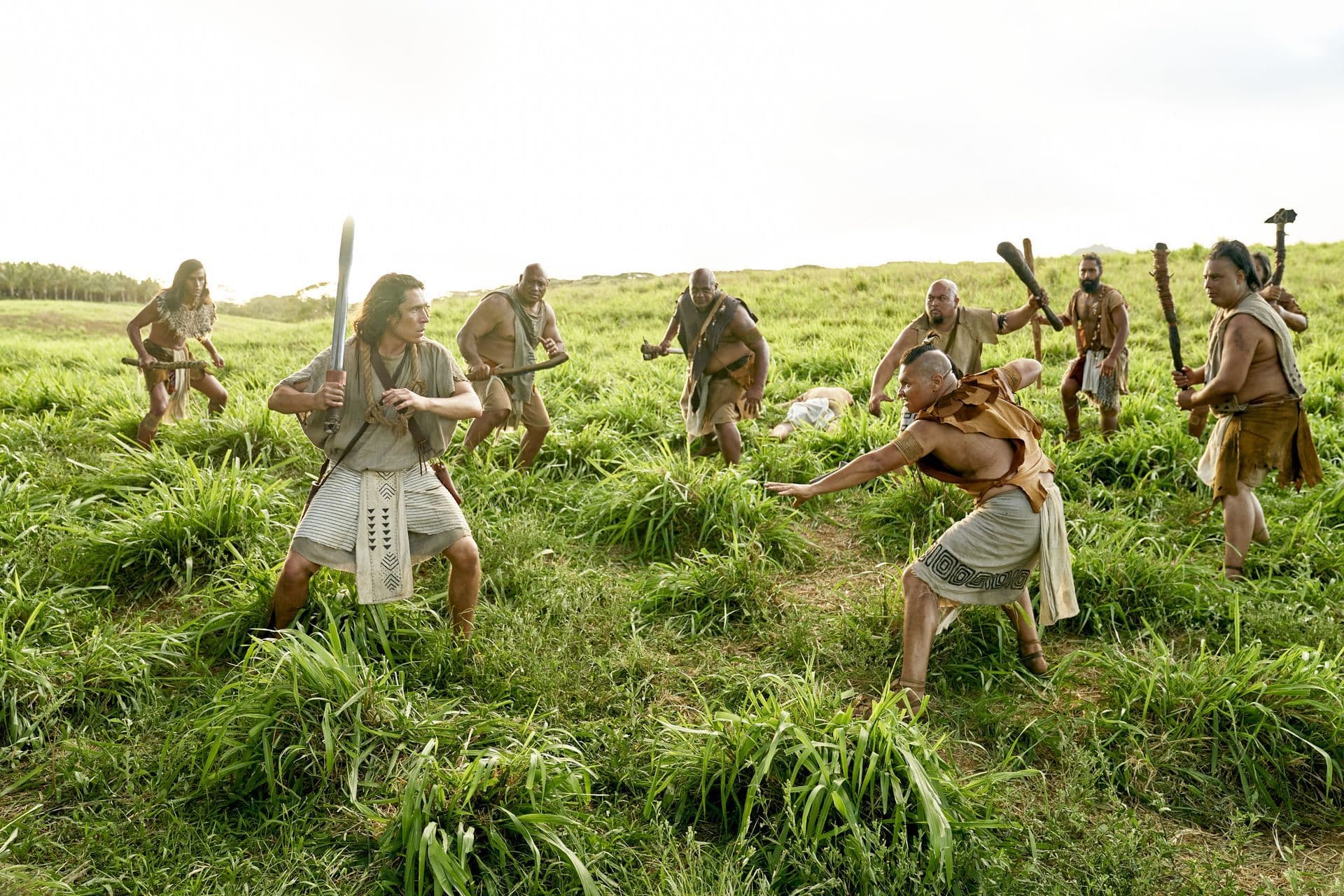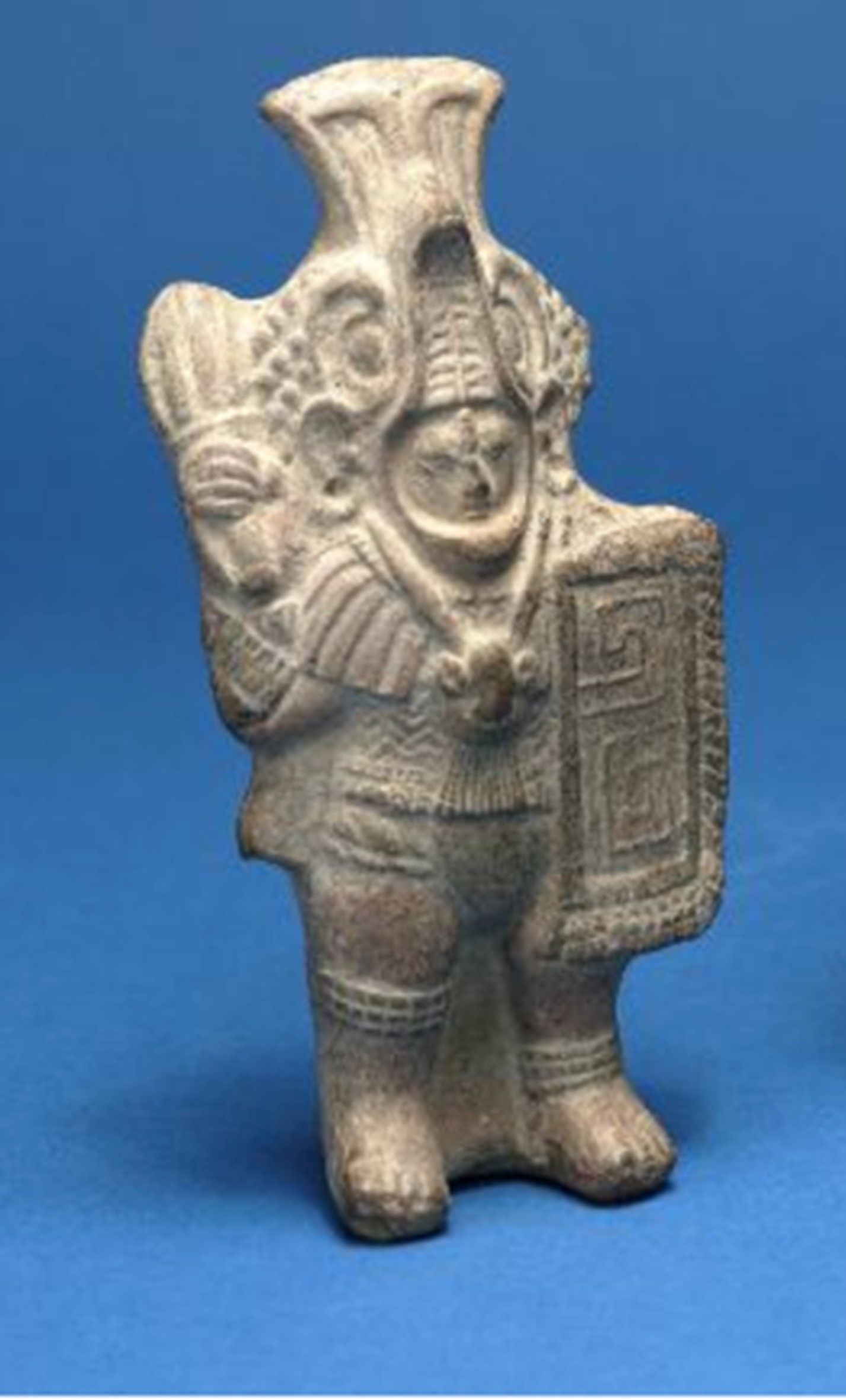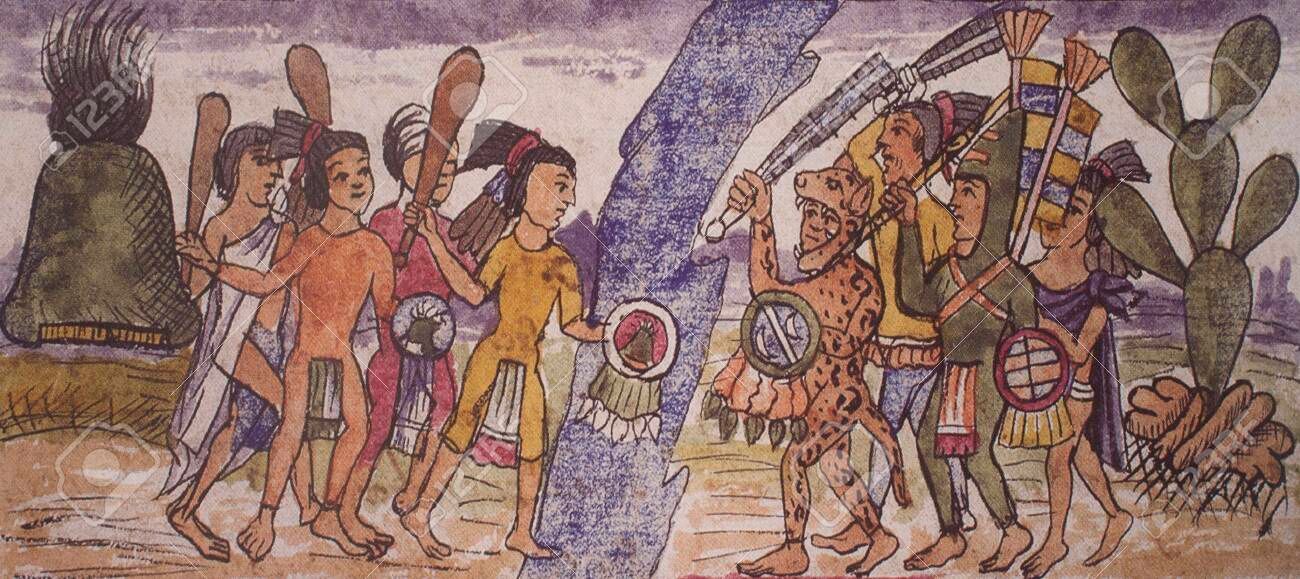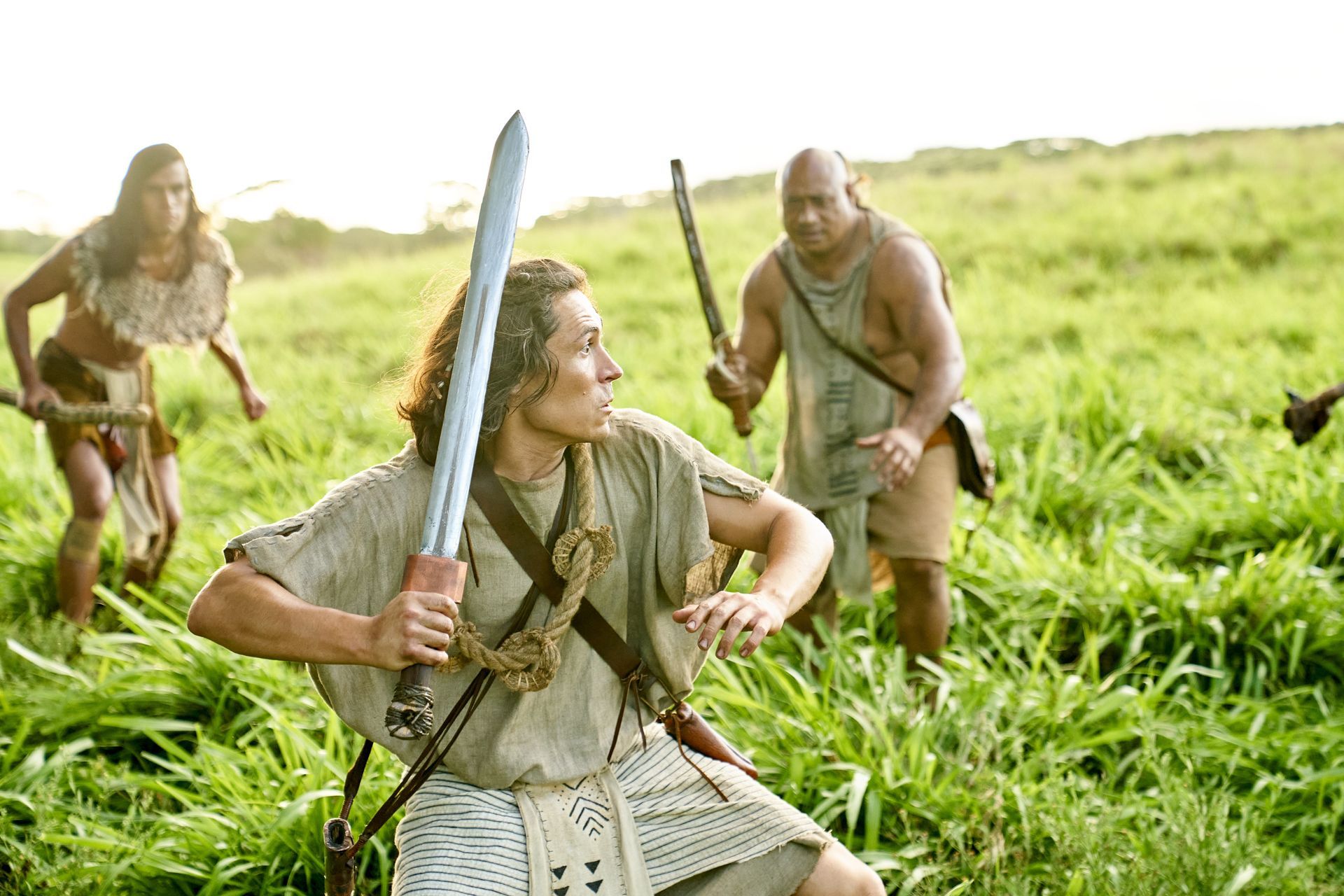Evidence #453 | July 2, 2024
Book of Mormon Evidence: Ancient American Clubs
Post contributed by
Scripture Central

Abstract
Along with many other weapons of warfare, the Book of Mormon on several occasions mentions the use of “clubs.” Not only were a variety of clubs used in ancient America, but the Book of Mormon’s descriptions of this weapon is militarily realistic.The Book of Mormon repeatedly mentions “clubs” as one of the weapons used by the Nephites and Lamanites.1 Though the term “club” isn’t used in the King James Version of the Old Testament, the rod, staff, and a few other weapons could appropriately be translated as a “club.”2 Thus, the use of clubs among Lehi’s posterity may derive, a least in part, from the Old World, where the weapon was used since prehistoric times.3

On the other hand, New World civilizations also used clubs or maces as weapons. In pre-Columbian times, clubs were utilized among all the major Mesoamerican civilizations (Olmec, Maya, and Aztec),4 as well as in North and South America.5 However, because clubs were mostly constructed from perishable materials, their form and function must often be reconstructed from figurines, codices, inscriptions, and colonial accounts. While some Mesoamerican clubs didn’t have any cutting edge, others were inset with sharp flint or obsidian blades. As explained by Ross Hassig:
The Maya less commonly used clubs, some of wood or bone, meant to crush the opponent, while others had single or multiple inset blades. The blades were inserted through holes in the wooden handles, rather than being lashed to the side, and were probably made of flint, which was widely available in the lowlands. These were significantly thicker than obsidian blades, but … thickness was necessary to withstand the shock of use as crushers. However, thick blades added weight, requiring a stout handle and producing a relatively short weapon that relied more on mass than on cutting surfaces for effect. Long clubs were feasible but had to be used with two hands, leaving the soldier unable to hold a shield.6
Thus, despite the cutting ability of many bladed clubs, they were still used to inflict blunt force trauma. Their effectiveness was sometimes enhanced by adding spheres or knobs, or by including both knobs and sharp points. Hassig notes:
Clubs of various types were also used in Mesoamerican warfare. Some were made of wood alone, but others (huitzauhqui) had stone blades. Another type of club was the cuauhololli, a simple wooden club with a spherical ball at the end .... Yet another type of club was the macuahuitzoctli, which had a knob of wood protruding from each of its four sides and a pointed tip [like] the medieval ‘morning star’ club. These relatively unspecialized clubs were fairly widespread.7
The Use of Clubs in the Book of Mormon
Clubs are mentioned several times in the Book of Mormon. In Zeniff’s first-person account, he listed clubs alongside other military armaments: “And it came to pass that I did arm [the Nephites] with bows, and with arrows, with swords, and with cimeters, and with clubs, and with slings, and with all manner of weapons which we could invent” (Mosiah 9:16). Notice, however, that clubs show up towards the end of the list, close to items that had to be “invented,” presumably due to a lack of proper weapons for all of their soldiers.
Clubs were also used by the plundering Lamanites at Sebus. Yet Ammon was able to incapacitate multiple club-bearing opponents by “smiting their arms with the edge of his sword” (Alma 17:36–37). A similar battle disparity occurred later on when Lamanite prisoners attempted to escape from their Nephite captors. In their desperation, the Lamanites “would fight with stones, and with clubs, or whatsoever thing they could get into their hands.” This caused the Nephites to “guard them, sword in hand, down to the land of Zarahemla.” Notably, the text reports that nearly two thousand Lamanites died during these prison revolts, while no Nephite deaths are mentioned (Alma 57:14–15).
Correspondences with Ancient American Warfare
Together, the textual evidence suggests that clubs were a somewhat inferior or unsophisticated weapon among Lehi’s posterity, which seems true-to-life. As pointed out by Hassig, “the shock advantage of … clubs was offset by their shortness and relatively great weight, which suggests that they may not have been primarily military weapons.” As such, “clubmen probably complemented spearmen and were used for specialty tasks.” On their own , “neither [clubs] nor axes would have fared well against conventionally armed opponents.”8

This analysis certainly holds true in the stories of Ammon and the Lamanite prisoners, and it possibly explains why clubs are not mentioned as being more widely used in standard military engagements throughout the Book of Mormon. Without discounting the emphasis on divine providence in some of these narratives, it is notable that combatants with clubs seem to have been significantly disadvantaged when facing opponents with swords.
For instance, during Ammon’s confrontation with the Lamanite raiders, “every man that lifted his club to smite Ammon, he smote off their arms with his sword” (Alma 17:37). Hassig notes that the “cuauhololli [an Aztec club] is a crusher and is thus effective in the downward blow but notably less so on the upward. Moreover, its lateral blows are probably less effective in absolute terms and impractical in combat.”9
If the Lamanite clubs were anything like this weapon, then there would have been little room for anything other than crushing—yet very predictable—vertical strikes. Not only would cumbersome clubs make their wielders more vulnerable to Ammon’s sword, William Hamblin and Brent Merrill suggest that the downward swinging motions of these raiders probably helped create the considerable force necessary for dismemberment.10 It should also be pointed out that, as a royal prince, Ammon probably received ample military training.11

Hassig further proposes that “clubs would have been excellent raiding weapons to be used against unarmed or lightly armed opponents.”12 This corresponds well with the strategy of the club-wielding Lamanites at Sebus, who relied on strength of numbers while preying on unarmed and unsuspecting victims (Alma 17:34–35).
Clubs vs. Swords
Regarding the Book of Mormon’s authenticity, one area of dispute involves the distinction between clubs and swords. One commentator has argued that Native Americans didn’t have swords, and that bladed weapons such as the macuahuitl only count as a “club.”13 This position, however, is unsupportable.
As mentioned previously, there is some overlapping of terms within the literature on warfare in ancient America, due to the fact that clubs were often inset with flint or obsidian blades. What one scholar might call a “club,” another might refer to as a “sword” or “axe.” The nomenclature can also become mixed, rendering compound words like “sword-clubs” and “club-axes.”14 Alternatively, the literature sometimes clearly distinguishes between these items, especially when bladed and non-bladed weapons are part of the same discussion. This distinction can be seen in modern academic literature,15 as well as in early colonial accounts.16
Thus, while it is understandable that a bladed weapon like the macuahuitl might sometimes get labeled as a “club,” it would be illogical to assert that it could only be called a “club” or that it couldn’t qualify as a “sword.” The important thing is that the distinction between “clubs” and “swords” in the Book of Mormon corresponds well with bladed and non-bladed weapons in ancient America.17
Conclusion
The Book of Mormon’s description of clubs is supported by evidence spanning across North, Central, and South America, where a variety of clubs were used by indigenous peoples in pre-Columbian times. Some of these club-like weapons could easily qualify as “swords,” due to their being inset with stone blades, while other non-bladed weapons fit the more traditional understanding of a “club.” The latter category most reasonably corresponds to the “clubs” mentioned in the Book of Mormon, since the text repeatedly distinguishes between clubs and swords.
In ancient America, non-bladed clubs are believed to have been inferior military weapons. This is also how they are portrayed in the Book of Mormon, where club-wielding combatants are repeatedly at a disadvantage when facing opponents with swords or other more advanced armaments. Although clubs are not a particularly novel or unexpected weapon in military history, the specific way that they are used in the Book of Mormon adds one more layer of consistency and realism to its depiction of ancient American warfare.18
Matthew Roper, “Swords and ‘Cimeters’ in the Book of Mormon,” Journal of Book of Mormon Studies 8, no. 1 (1999): 39–40.
Matthew Roper, “On Cynics and Swords,” FARMS Review of Books 9, no. 1 (1997): 151–152.
Matthew Roper, “Eyewitness Descriptions of Mesoamerican Swords,” Journal of Book of Mormon Studies 5, no. 1 (Spring 1996): 150–158.
- 1. See Mosiah 9:16; Alma 17:36–37; 57:14.
- 2. Hebrew shebet and matteh can both be translated as rod, staff, or scepter in the King James Version, though other versions translate them occasionally as club or mace. A few other words or phrases like totah, mepits/mapets, and keli mappatso should probably also be translated as mace or war club. See Ludwig Koehler, Walter Baumgartner, and Johann J. Stamm, The Hebrew and Aramaic Lexicon of the Old Testament [HALOT], trans. and ed. Mervyn E. J. Richardson, 2 vols. (Boston, MA: Brill, 2001), s.v. “שֵׁבֶט,” “מַטֶּה,” “מַפֵּץ,” “מַפָּץ,” “מֵפִיץ,” “תּוֹתָח.”
- 3. As in the New World, Old-World maces and clubs were eventually rendered ineffective due to the proliferation of shields, defensive armor, and better weapons, but sometimes continued to have ceremonial importance. Ross Hassig says concerning Mayan clubs that, “They may actually have been more important for ceremonial purposes or as execution devices … or they may have served as badges of office.” Ross Hassig, War and Society in Ancient Mesoamerica (Berkeley, CA: University of California Press, 1992), 71. For a discussion of Old-World maces as used in ancient Canaan and Egypt, see Yigael Yadin, The Art of Warfare in Biblical lands in the Light of Archaeological Study, 2 vols. (New York, NY: McGraw Hill Book Company, 1965). 1:11, 40.
- 4. Hassig, War and Society, 15, 71, 197, 248.
- 5. The club or mace was used by many pre-Columbian cultures in South America, including the Inca. However, some of these are referred to as macanas or swords, so the reader has to be careful of what weapon is meant by the term “club.” See Alexandre Bernand, “Macanas: The Art of Clubs from Amazonia,” CRATER, Arte e Historia, 2, 1–21. The war club was also a common and important weapon in North America in the Mississippian period. During the Middle Mississippian period (AD 1100–1350), “Handheld weapons such as war clubs proliferated into several forms by this time, ranging from sticks and staffs to swords and hatchets.” David H. Dye, “The Transformation of Mississippian Warfare: Four Case Studies from the Mid-South,” in The Archaeology of Warfare: Prehistories of Raiding and Conquest, ed. Elizabeth N. Arkush and Mark W. Allen (Gainesville, FL: University Press of Florida, 2006), 131. See also, Wayne William Van Horne, “The Warclub: Weapon and Symbol in Southeastern Indian Societies” (Doctoral Dissertation, University of Georgia, 1993), 60–106.
- 6. Hassig, War and Society, 71.
- 7. Ross Hassig, Aztec Warfare: Imperial Expansion and Political Control (Norman, OK: University of Oklahoma Press, 1995), 85.
- 8. Hassig, War and Society, 96.
- 9. Hassig, Aztec Warfare, 85.
- 10. William J. Hamblin and A. Brent Merrill, “Swords in the Book of Mormon,” in Warfare in the Book of Mormon, ed. Stephen D. Ricks and William J. Hamblin (Provo, UT: FARMS; Salt Lake City, UT: Deseret Book, 1990), 335–337.
- 11. See Hassig, War and Society, 74–75: “Because of the enormous investment in arms, armor, and particularly in specialized training in their use, there is an inevitable differentiation in troops in all societies with professional soldiers. No society can afford to equip and train all its soldiers to the highest possible level. The presence of elaborate military garb suggests military orders which probably trained the elite segments of society, although lineages could also have performed this function.”
- 12. Hassig, War and Society, 96.
- 13. James White, “Of Cities and Swords,” Christian Research Journal 19, no. 1 (Summer 1996): 35.
- 14. For references to the macuahuitl as a “sword,” “sword-club,” “club,” and neither “sword” nor “club,” see Hassig, Aztec Warfare, 45, 222; Michael D. Coe, “Pre-Conquest America,” in Swords and Hilt Weapons (New York, NY: Weidenfeld and Nicholson, 1989), 220–222; Marco Antonio Cervera Obregon, “The Macuahuitl: An Innovative Weapon of the Late Post-Classic in Mesoamerica,” Arms and Armour 3, no. 2 (2006): 128; Marshall H. Saville, “Bibliographic Notes on Quirigua, Guatemala,” in Indian Notes and Monographs (New York, NY: Museum of the American Indian, 1919), 6:1:70. For references to South American “club-axes,” see Bernand, “Macanas,” 6.
- 15. See, for example, Hassig, War and Society, 248. Note that like Book of Mormon swords, the macuahuitl is sometimes depicted as removing limbs and heads, which was not the goal of ancient American clubs (Alma 17:37–39; Ether 15:30–31).
- 16. Francisco López de Gómara, The Conquest of the Weast India (Readex Microprint Corporation, 1966), 186; Antonio de Herrera, The General History of the Vast Continent and Islands of America, Second Edition (London, UK: Wood and Woodward, 1740; New York, NY: AMS Press, Inc., first edition 1973), 2:352.
- 17. For information on bladed weapons in the Book of Mormon, see Scripture Central, “Book of Mormon Evidence: Pre-Columbian Swords” Evidence# 195 (May 25, 2021); Scripture Central, “Book of Mormon Evidence: Swords in Book of Mormon Times” Evidence# 194 (May 25, 2021); Scripture Central, “Book of Mormon Evidence: Axes” Evidence #0170 (March 22, 2021).
- 18. For a general treatment of Book of Mormon weapons, see Scripture Central, “What Does Archaeology Reveal about Warfare During Early Nephite Times? (Jarom 1:7–8),” KnoWhy 328 (March 29, 2024).